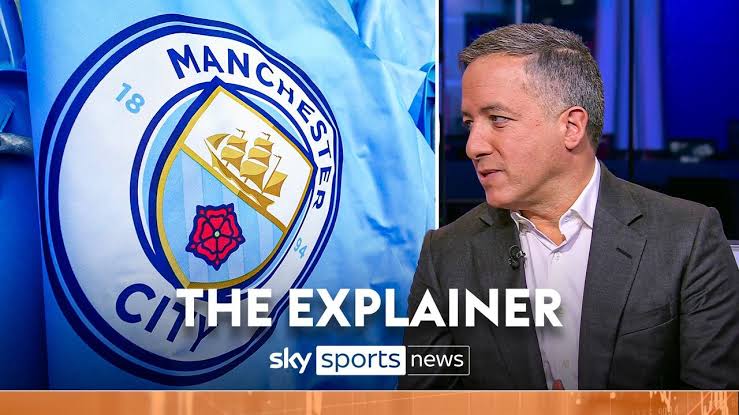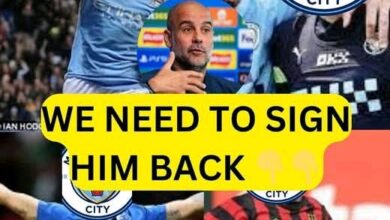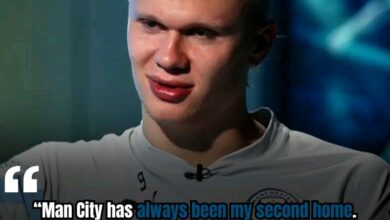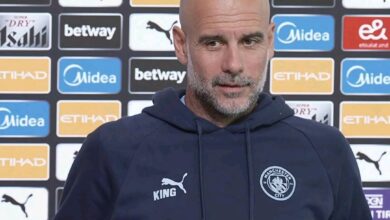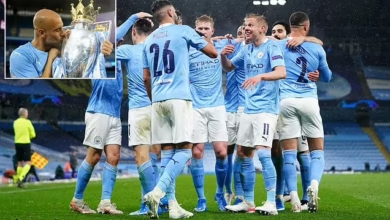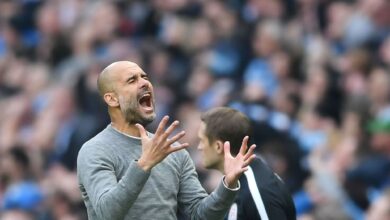Ex Arsenal Star Theo Walcott Sends Warning To Saka Over Man City Interest

In the ever-evolving landscape of modern football, few topics generate as much debate and speculation as the potential transfer of a young, promising talent from their boyhood club to one of the sport’s financial powerhouses. The summer of 2022 presented Arsenal Football Club with precisely such a dilemma, as reports emerged of Manchester City’s intensified interest in one of the Gunners’ most prized assets: Bukayo Saka.
The 20-year-old winger had become the embodiment of Arsenal’s youth development philosophy, rising through the ranks to establish himself as not only a key player for his club but also a regular fixture in Gareth Southgate’s England squad. However, with Arsenal’s failure to secure Champions League qualification for the sixth consecutive season, questions inevitably arose about whether the Emirates Stadium remained the ideal environment for a player of Saka’s caliber to continue his development.
The Context: Arsenal’s Transitional Period
The 2021-22 season had promised so much for Arsenal under Mikel Arteta’s guidance. For substantial periods, the North London club appeared destined for a top-four finish that would have represented a significant step forward in their post-Arsène Wenger reconstruction. The Spanish manager had implemented a clear philosophy, placing emphasis on youth development while attempting to restore the club’s identity and competitive edge.
Saka had been central to these ambitions, his versatility and technical ability making him an indispensable component of Arteta’s tactical setup. Whether deployed as a right-back, left-winger, or in more recent times as a right-winger, the Hale End graduate had consistently delivered performances that belied his tender years. His ability to carry the ball, create chances for teammates, and contribute goals had made him one of the most exciting prospects in English football.
However, Arsenal’s season ultimately unraveled in spectacular fashion. A series of disappointing results in the crucial final weeks, including defeats to Brighton, Crystal Palace, and Newcastle United, allowed their North London rivals Tottenham Hotspur to leapfrog them into fourth place. The failure to secure Champions League football was particularly painful given how close they had come, and it inevitably raised questions about the club’s ability to retain their best players.
Manchester City’s Interest: A Threat to Arsenal’s Ambitions
The emergence of Manchester City as serious contenders for Saka’s signature represented perhaps the most significant challenge to Arsenal’s rebuilding project. Pep Guardiola’s side had just completed another dominant Premier League campaign, securing their fourth title in five seasons while also demonstrating their continued evolution as a footballing force.
City’s interest in Saka was not entirely surprising. The Citizens had long been admirers of the young Englishman, recognizing his potential to contribute to their system both immediately and in the long term. Despite the imminent arrivals of Erling Haaland from Borussia Dortmund and Julian Álvarez from River Plate, City’s recruitment team identified Saka as a player who could add a different dimension to their attacking options.
The timing of City’s approach was particularly challenging for Arsenal. Having missed out on Champions League qualification, the Gunners faced the prospect of being unable to offer their star player the elite European competition that had become synonymous with career progression in modern football. For a player of Saka’s ambition and ability, the opportunity to compete at the highest level while working under one of the world’s most successful coaches represented an almost irresistible proposition.
Liverpool, under Jürgen Klopp, were also monitoring the situation closely. The Merseyside club was facing their own transition period, with Sadio Mané’s departure to Bayern Munich confirmed and questions surrounding Mohamed Salah’s long-term future at Anfield. Saka’s profile as a dynamic, versatile attacker capable of operating across multiple positions made him an attractive target for Klopp’s high-intensity system.
Theo Walcott’s Perspective: The Voice of Experience
Into this complex situation stepped Theo Walcott, a player uniquely positioned to offer insight into Saka’s predicament. Walcott’s own career trajectory had followed a remarkably similar path during his formative years at Arsenal. Like Saka, he had emerged from the club’s youth system to become a key player at a remarkably young age, earning international recognition and attracting interest from Europe’s elite clubs.
Walcott’s 12-year association with Arsenal, spanning from 2006 to 2018, had encompassed both the club’s most successful period under Arsène Wenger and the beginning of their decline from the pinnacle of English football. His experiences had provided him with intimate knowledge of the pressures facing young players at the club, particularly when confronted with opportunities to join more successful teams.
Speaking to TalkSPORT, Walcott articulated a perspective that balanced pragmatic career advice with genuine affection for his former club. His assessment of Arsenal’s current situation was notably realistic, acknowledging the transitional nature of the club’s current phase while expressing confidence in the direction under Arteta’s leadership.
“Well, there is obviously a transitional stage at Arsenal, that Mikel is part of, and Saka is massively part of it as well,” Walcott observed. “The younger crop of players at Arsenal coming through, I feel as though the club need to keep hold of him, simple as that.”
This statement encapsulated one of the central arguments for Saka remaining at Arsenal: his role in the club’s long-term project. Rather than being merely another talented player in a squad full of established stars, Saka represented the future of Arsenal Football Club. His development was intrinsically linked to the club’s own evolution, creating a symbiotic relationship that could benefit both parties in the long term.
The Allure and Risks of Manchester City
Walcott’s assessment of Manchester City’s interest was particularly nuanced, acknowledging both the appeal and potential pitfalls of such a move. “Obviously, when Manchester City come knocking on the door, it is such a hard thing for any player really to turn down,” he admitted, recognizing the almost irresistible nature of the opportunity.
The appeal of Manchester City extended far beyond their recent success. Guardiola’s reputation as a developer of talent, combined with the club’s commitment to playing attractive, possession-based football, created an environment that many young players found irresistible. The prospect of working alongside world-class teammates while competing for major trophies on multiple fronts represented the kind of opportunity that could accelerate any player’s development.
However, Walcott’s warning about limited playing opportunities at City reflected a more sobering reality of life at elite clubs. Guardiola’s rotation policy, while tactically astute and beneficial for squad management, inevitably meant that even talented players could find their minutes restricted. The imminent arrivals of Haaland and Álvarez only added to this concern, suggesting that competition for places in City’s attack would become even more intense.
“He needs to understand that the playing opportunities will be limited at Manchester City,” Walcott cautioned. “He will, of course, be more likely to win things, but it is not saying Arsenal won’t win things.”
This observation highlighted one of the fundamental dilemmas facing ambitious young players in modern football: the balance between immediate success and long-term development. While Manchester City could offer virtually guaranteed trophies, the question remained whether Saka would receive sufficient playing time to continue his individual progression.
The Arsenal Factor: Loyalty and Long-term Thinking
Walcott’s advocacy for Saka remaining at Arsenal was rooted in both emotional and practical considerations. His reference to Saka’s apparent comfort in London and connection with the Arsenal fanbase reflected the often-underestimated importance of personal factors in transfer decisions.
“He is very young, but I feel that he likes the area of London in Arsenal, the fans have been fantastic, and at the Emirates, which is one of the best stadiums I have ever played in,” Walcott noted. “He has great support, and I will be intrigued. My heart says he will be at Arsenal next season, and we will see after that.”
The Emirates Stadium had indeed provided Saka with an ideal environment for his development. The Arsenal faithful had embraced him as one of their own, creating an atmosphere of support and encouragement that had undoubtedly contributed to his confident performances. This connection between player and supporters represented something that could not easily be replicated at another club, particularly one where he might struggle to establish himself as a regular starter.
Walcott’s assessment of Arsenal’s trajectory also demonstrated a more optimistic view of the club’s future than many critics were willing to acknowledge. His assertion that “they are in that phase, they are slowly starting to get there” reflected his belief that Arsenal’s rebuilding project was beginning to bear fruit, even if the results had not yet fully materialized.
The former England international’s reference to Arsenal potentially “taking fifth at the start of the season” highlighted how far the club had already progressed under Arteta. While the ultimate disappointment of missing out on the top four was undeniable, the fact that they had been genuine contenders for most of the campaign represented significant progress from their previous seasons.
Ally McCoist’s Supporting Voice
Rangers legend Ally McCoist provided additional support for the argument that Saka should remain at Arsenal, offering his own perspective on the potential pitfalls of a move to Manchester City. McCoist’s analysis was particularly focused on the practical implications of Guardiola’s squad management philosophy.
“You would think he would be guaranteed to play at Arsenal every week, whereas he would be going from a big fish in small pond to a small fish in a big pond if he went to City,” McCoist observed. “The rotation system they have every week, he would not always be playing; at Arsenal, he is one of the big chiefs.”
This “big fish, small pond” analogy effectively captured one of the central arguments against such a transfer. At Arsenal, Saka had established himself as an undroppable player, his name among the first on the team sheet regardless of the opposition or tactical considerations. This guaranteed playing time had been crucial to his development, allowing him to gain experience in various situations and build the confidence necessary to perform at the highest level.
At Manchester City, despite the undoubted quality of coaching and teammates, Saka would inevitably face increased competition for places. Guardiola’s preference for tactical rotation meant that even established stars sometimes found themselves on the bench for important matches. For a young player still developing his game, this uncertainty could potentially hinder rather than help his progression.
McCoist also acknowledged the complexity of the decision, recognizing that “the offer would turn most young boys’ heads, of course it would.” This honest assessment reflected the reality that few players in Saka’s position would find it easy to reject such an opportunity, regardless of the potential drawbacks.
Saka’s Track Record and Future Potential
The statistical evidence supporting Saka’s importance to Arsenal was compelling. His 23 goals in 131 appearances represented a solid return for a player who had primarily operated as a winger or wing-back, while his four goals in 15 England caps demonstrated his ability to perform at international level. Perhaps more impressively, his nomination for both the PFA Player and Young Player of the Year Awards highlighted the recognition he had earned from his peers within the professional game.
These achievements were all the more remarkable considering Saka’s age and the challenging circumstances Arsenal had faced during his emergence as a first-team player. His ability to maintain consistent performance levels despite the pressure and expectation placed upon him suggested a mental strength that augured well for his future development.
The versatility that Saka had demonstrated throughout his Arsenal career was another factor that made him such an attractive proposition for clubs like Manchester City and Liverpool. His ability to operate effectively in multiple positions provided tactical flexibility that modern coaches increasingly valued. However, this same versatility was also what made him so crucial to Arsenal’s system under Arteta.
The Broader Context of Player Development
Saka’s situation highlighted broader questions about player development in modern football. The concentration of wealth and success among a small number of elite clubs had created a challenging environment for traditionally successful clubs like Arsenal to retain their best young talent. The promise of immediate success and higher wages at clubs like Manchester City represented a powerful draw that was difficult to resist.
However, the experiences of other young players who had made similar moves provided mixed evidence about the wisdom of such decisions. While some had thrived in more competitive environments, others had seen their development stall due to limited playing opportunities. The key often lay in timing – making such moves too early could hinder development, while waiting too long might mean missing the opportunity entirely.
For Arsenal, retaining players like Saka was crucial not just for their immediate competitive prospects but also for their long-term strategy. The club’s emphasis on youth development would be undermined if their best prospects consistently departed for rival clubs before reaching their full potential. This made Saka’s decision particularly significant for Arsenal’s broader ambitions.
The Summer of Decision
As the summer transfer window approached, the various stakeholders in Saka’s future would need to navigate a complex web of competing interests and considerations. Arsenal would undoubtedly do everything possible to retain their star player, likely offering improved contract terms and assurances about the club’s ambitions. The potential signing of high-profile players to demonstrate their commitment to success would also play a crucial role in these discussions.
For Manchester City, the pursuit of Saka represented more than just adding another talented player to their squad. It would demonstrate their ability to attract the best young English talent while potentially weakening a domestic rival. However, they would also need to provide convincing assurances about playing time and development opportunities.
From Saka’s perspective, the decision would ultimately come down to his personal priorities and career ambitions. If immediate success and the opportunity to work with Guardiola were his primary motivations, Manchester City would represent an attractive proposition. However, if he valued guaranteed playing time and the opportunity to be the central figure in a club’s development, Arsenal would remain the logical choice.
Conclusion: Wisdom in Patience
Theo Walcott’s advice to Bukayo Saka reflected the wisdom of experience and a deep understanding of both the opportunities and pitfalls that faced young players in modern football. His argument for patience and long-term thinking provided a compelling counterpoint to the immediate allure of joining one of Europe’s most successful clubs.
The summer of 2022 would ultimately test Saka’s resolve and Arsenal’s ability to retain their most precious asset. Regardless of the outcome, the debate highlighted the ongoing challenges facing football’s traditional powers in an era of unprecedented financial inequality and competitive imbalance.
For Arsenal supporters, Walcott’s optimistic assessment of the club’s trajectory provided hope that their rebuilding project might yet succeed in creating a team capable of competing at the highest level while remaining true to their philosophical principles. The retention of players like Saka would be crucial to realizing these ambitions and proving that loyalty and patience could still be rewarded in modern football’s increasingly mercenary environment.
As the transfer window unfolded, all eyes would be on the young Englishman whose decision could shape not only his own career but also the future direction of one of English football’s most storied institutions. Whatever choice he made, Saka’s situation served as a fascinating case study in the complex dynamics that governed player movement in the contemporary game, where talent, ambition, loyalty, and pragmatism constantly competed for influence over career-defining decisions.
